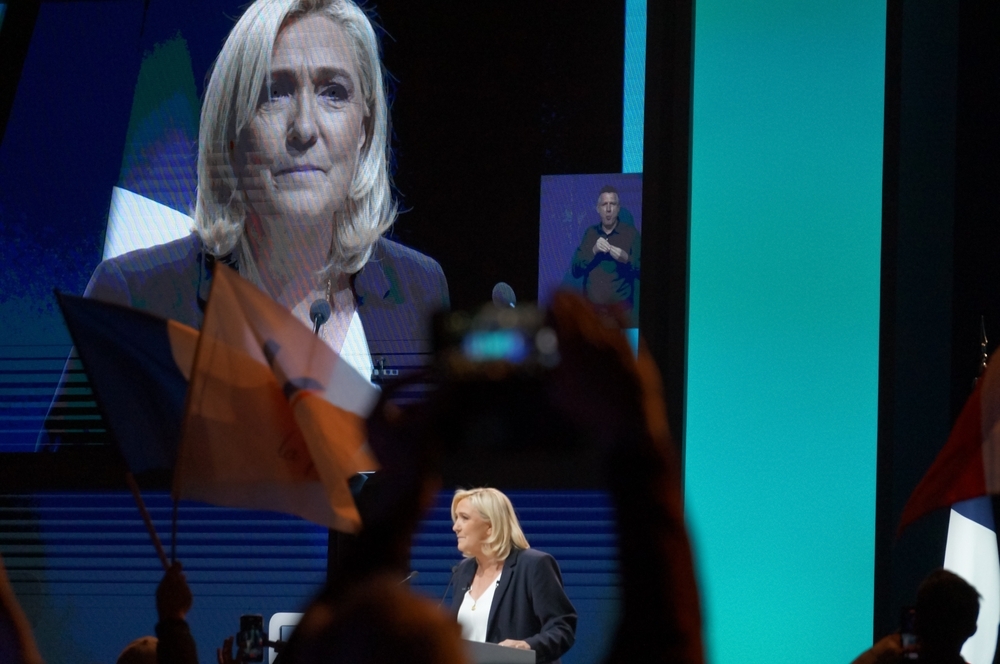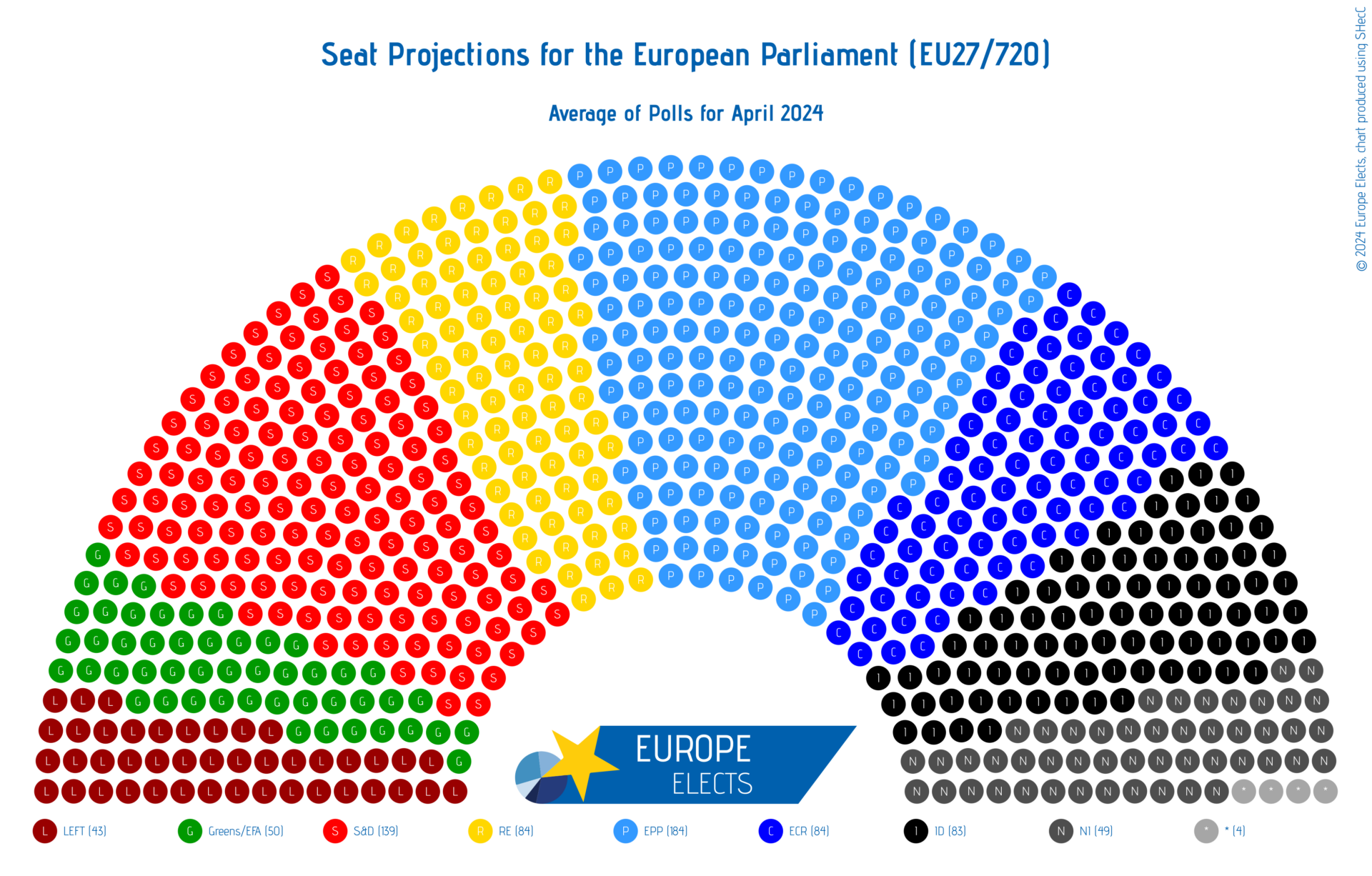Will the rise of far-right Europe be a wave or a tsunami?
In the run-up to the European Parliament elections, Europe's far-right parties are stronger than ever. On the one hand, this will probably mean that there will be more far-right MEPs in the next EP, but far right parties in their current form are too divided and disorganised to represent a real force.

©Spech/Shutterstock
The rise of the EU’s far right has been a hot topic in recent weeks, and journalists and analysts have made various predictions about the future of the European Parliament and European politics in general. HVG’s press reviews are regularly dominated by the topic, and in recent weeks almost every self-respecting analyst and specialised journalist has made a statement on it. We’ve heard it all, lately. The most pessimistic already envision the fall of Europe, while the most optimistic believe that there is nothing to worry about, since the far right will not be able to work effectively, either among each other or with other parties. The direction in which one leans depends largely on how they think the EU and the European Parliament work, political principles and rationalities, flexibility, the interests of certain actors, etc. In this article, we’re going to compare the most commonly used arguments and analytical logics to navigate the far-right panic.
What’s going on?
According to a recent report by Politico, most EU countries currently have far-right parties that are either already in government or will come first or second in the next elections. This, of course, will also be reflected in the composition of the European Parliament, where in the second half of 2024 far right parties may have, overall, around 40 more MEPs than after the 2019 elections. Every month, Europe Elects calculates how many MEPs each party family might count on, based on the latest surveys and broken down by member state.

The two far-right party families alone, the European Conservatives and Reformists (ERC) and Identity and Democracy (ID), would have 167 MEPs (out of 720). Also the vast majority of independents (49+4) are some kind of far right parties. At the Member State level, we need to focus on two important actors. In France, Marine Le Pen’s National Rally leads the polls and is expected to win 30 MEPs, while in Italy, the Brothers of Italy of Prime Minister Giorgia Meloni are expected to elect 22 MEPs.
The struggle of European Party groups
The reason why we do not speak uniformly of the European far right, but of ERC or ID, lies in the system of European party groups. All national parties, including those on the far right, usually join one of the large European party groups on ideological grounds. There are two options for the far right: the European Conservatives and Reformists, which by comparison is a more presentable, deeply nationalist, conservative party, and the much more populist, radical and less ‘acceptable’ Identity and Democracy. The ERC includes parties such as Poland’s Law and Justice (PiS), which is undoubtedly ultraconservative and populist, i.e. far-right, and Meloni’s Brothers of Italy. Le Pen’s National Rally is a member of ID, as is the Austrian Freedom Party, which is pro-Putin (as a recent scandal confirmed), wants to build a more autocratic state (just like Orbán), and it is not uncommon for one of its members to say something anti-Semitic or racist. The third option for a far-right party is to remain independent. This is the case with Hungary’s Fidesz, as it was forced out of the EPP in 2021, and it seems that the Hungarian ruling party has not found common ground with either the ERC or ID yet. The two far-right party families are not automatic allies on all issues: for instance, they have very different views on Russia.
The ERC may also hope that, by presenting itself in a slightly more acceptable way, it can become a decisive ally of the largest party in the European Parliament, the European People’s Party (EPP). At the moment, some EPP members are strongly reluctant to cooperate more closely with the ERC, on the one hand because working with the far right is not a very easy choice to defend in front of their domestic electorate, and on the other hand because it could compromise their alliances and good relations with other parties in the European Parliament. The EPP currently works on most issues in coalition with the second largest party, the European Socialists and Democrats (S&D), and often with the Greens or the liberal Renew Europe. However, the S&D group seems to have drawn a hard line on cooperation with the far right. Ursula von der Leyen is seeking parliamentary support for her second mandate as president of the European Commission as the EPP’s lead candidate, but when she showed openness to working with the ERC, specifically with Meloni, the S&D almost immediately signaled that they would withdraw their support for her if she did not decisively break with the far right. Also, according to an analysis by the Robert Schuman institute, the ERC and ID would be unreliable allies, and they are not strong when it comes to technical work.
European interests and domestic constraints
Many analyses, moving away from political party families, look more at the personalities and personal ambitions of prominent politicians. Recently, it was reported in the media that Marine Le Pen could find her real future European ally in Giorgia Meloni. The rapprochement between the two politicians is extremely logical: both belong to Europe’s extreme right, are doing well in their countries’ elections, and are seeking some kind of European leadership.
However, there are just as many, if not more, arguments against an alliance between the two. Firstly, there is a deep and perhaps irresolvable conflict on two important programme points: Le Pen is considered a strongly pro-Russian politician (even after the war broke out, she used campaign materials showing her with Vladimir Putin), while Meloni is committed to supporting Ukraine. Pro-Russian standpoints are more prevalent in Meloni’s political rival-ally, Matteo Salvini, and this is one of the dividing lines between Salvini’s far-right League and Meloni’s far-right Brothers of Italy. So it’s understandable that the Italian prime minister wouldn’t be happy to compromise her position by befriending pro-Russian politicians at the European level.
The second point is migration. Meloni broadly supports the EU’s migration reform, which led Le Pen to sharply criticize her. In the rhetoric of both politicians, migration and anti-migrant sentiment occupy a prominent place, which is important to them on the domestic stage. Meloni, on the other hand, desperately needs the quota system set out in the EU’s migration reform. Italy is one of the busiest arrival points for refugees, so with the quota system it would transfer some of the migrants out of its territory, while France would have to take them in, hence Le Pen opposes the reform. The two politicians agree that they do not want migrants in their own countries, but according to the one side, a solution would mean more migrants for the other, which the other opposes.
In addition, Meloni is approaching Europe’s Christian conservatives, trying to be a reliable negotiator in the EU, and has already been called “The New Merkel” in connection with the taming of Viktor Orbán, for example. Meloni’s ability to strike deals in the EU lies in her ability to win the trust of both the far right and mainstream parties. It’s not the same for Le Pen: despite her electoral success (although she never won the presidency as Meloni did), she remains too far right for almost all European politicians. Incidentally, it is worth mentioning Viktor Orbán, who also has a similar problem: the leader of the EU’s most undemocratic country does not have a very good reputation in Brussels, and anyone who allies himself with him immediately gets politically isolated.
Only votes count
Another perspective is that it is of little importance who joins which party group or with whom they enter into a coalition, what matters is how MEPs and party families vote on specific issues and with whom they cooperate on a given issue. That’s what political scientists Simon Hix and Abdul Noury are pondering in this report, using voting data from the last term to model which issues could be relevant in a slightly more far-right Parliament.
The so-called ‘grand coalition’ (EPP+S&D) could somewhat weaken, but the so-called ‘super large coalition’ (EPP+S&D+Renew) will still have a secure majority (about 56%). Since these parties have relatively good cohesion on most issues, and MEPs within the parties aren’t much divided, the issues that this coalition has supported so far are probably safe from the far right. These include foreign policy, economic and industrial development, energy, education, and culture.
On the other hand, the topics on which the progressive parties of the EP have so far won a majority (with only a few politicians from the EPP voting along) will be placed on somewhat more uncertain ground. These include environmental protection, food safety, social issues and civil rights. An alternative majority could now be the so-called ‘right-wing coalition’ (EPP+ERC+ID), which is projected at around 49%. Add to this the right-wing independents, and the right has a significantly more positive chance of taking over, for example, in the key decisions about the European Green Deal, and could undermine the EU’s top environmental priorities.
However, this is far from certain. Based on the numbers alone, the math might work if every MEP voted as his or her group indicates. However, cohesion on the far right is rather weak and MEPs are extremely divided on many issues. ID is by far the most inconsistent: for example, according to the voting data examined, the group is uncertain on the topics of the support to Ukraine and artificial intelligence. Unified voting is also important so that groups can make deals, which is impossible if some MEPs ignore their indications of vote. So, the first question is whether the far right will be able to sort out its ranks.
What is even more important, however, is how willing EPP’s MEPs are to vote cohesively, especially if and when they would have to work with the far right. The EPP, like all large parties, is quite diverse, with more progressive and more explicitly traditional conservative members. On some issues, such as nature conservation or refugees, a small but not insignificant proportion of EPP’s MEPs voted with the left. A similar thing happened with sanctions against Russia, when the EPP supported them but a minority of the party’s representatives voted with right-wing opponents. Now, the median MEP, i.e. a politician who is at the centre of the political spectrum and might be decisive in winning a 50% parliamentary majority, will probably belong to the progressive wing of the EPP. So if the more liberal EPP members vote to the left, the European liberal-right position will have a majority, while if they vote right, the vote will be tilted towards the right-far right.
So one can only speculate on how 10-20 decisive MEPs, who will be central in many debates, will behave. What is encouraging is that it was such more European, progressive wing of the EPP that essentially kicked Viktor Orbán’s Fidesz out of the party in the previous term, even if the EPP’s parliamentary majority regretted it. It is not certain that European Christian Democrat politicians will be happy to play coquette with the far right. In this case, the EU’s far right remains significant and vocal, but at the same time a minority.
Original source: https://hvg.hu/360/20240606_europai-parlamenti-valasztas-meloni-le-pen-orban-szelsojobb
